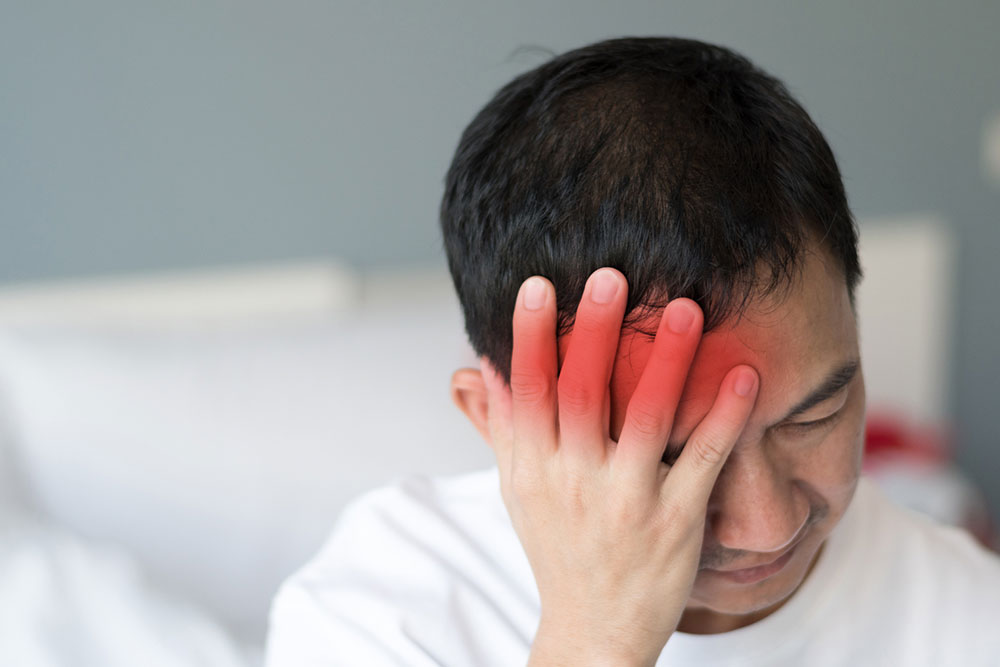4 Stages of Migraine and Their Symptoms
Chronic migraine attack leads to a pulsing sensation accompanied by severe pounding pain on one side of the head. Intense sensitivity to sound and light, nausea, and vomiting are some of the chronic migraine symptoms. Chronic migraine attacks can last up to anywhere from a couple of hours to several days. The pain caused by a migraine in the worst-case scenarios can lead to disability. A chronic migraine is a serious health condition that needs to be dealt with as quickly as possible.

Some of the chronic migraine symptoms might appear sometime before the migraine pain, hinting at an imminent migraine attack. These are classified as the first and second stage of migraine symptoms, known as prodrome and aura respectively. While prodrome symptoms appear before the migraine attack in every case, aura symptoms might appear before or along with a migraine headache. Tingling on one side of the arm, leg or face, blind spots, and flashes of light are some of the common warning symptoms of chronic migraine attacks. You need to consult a doctor to seek out different migraine treatments and get some relief. Lifestyle changes and self-help remedies combined with the right medication can be of great help in minimizing migraine attacks.
People with migraines start experiencing the symptoms in early childhood, adolescence, or early adulthood stage. Migraine symptoms are classified into four stages; however, not all patients suffering from migraine experience all of these stages.
Stages of a chronic migraine
Migraines progress in four stages: prodrome, aura, attack, and postdrome. All of them have distinct chronic migraine symptoms. Patients might not experience each of them in all migraine scenarios. Each of the stages is briefed up as follows:
Stage #01 – Prodrome
The first stage of chronic migraine symptoms is the prodrome stage. Symptoms during this stage might appear one or two days before the actual migraine attack. Common prodrome phase symptoms include:
- Constipation
- Food cravings
- Frequent yawning
- Hike in thirst
- Increased urination
- Mood changes
- Stiffness in the neck
Unlike other severe chronic migraine symptoms, prodrome stage symptoms are subtle in nature and might be difficult to spot and associate with an upcoming migraine attack.
Stage #02 – Aura
In most cases, people have migraine attacks without experiencing the aura stage. It may occur before the migraine attack or simultaneously with it. Unlike the prodrome stage, migraine symptoms during the aura stage are symptoms associated with the nervous system.Though aura symptoms might vary from sensory to verbal disturbances, they are typically visual disturbances, such as zigzag vision and flashes of light. Most of the chronic migraine symptoms associated with the aura stage build up in a matter of time, lasting for around 20 to 60 minutes.Common aura symptoms are:
- A pinching sensation in the arm or leg
- Difficulty in speech
- Distorted visuals
- Hearing accompanied by noise
- Loss of vision
- Numbness in one side of the body, especially in the face
- Uncontrollable jerks
- Weakness
In most cases, migraines with aura are associated with a hemiplegic migraine, also known as limb weakness.
Stage #03 – Attack
The third stage of migraine is the attack. This stage is concurrent with real migraine pain. The frequency of headaches experienced during the migraine attack varies from person to person. When left untreated, migraine pain can last up to 72 hours. The number of migraine attacks experienced by a person might vary from one or two in a trimester to several in a single month. Chronic migraine symptoms associated with the attack stage are:
- Blurry vision
- Fainting
- Lightheadedness
- Nausea
- Sensitivity to sound and light, occasionally to smell and touch
- Severe thudding pain on one side of the head
- Throbbing pain on both sides of the head
- Vomiting
Medication during the attack stage might help in curbing some of the symptoms of a migraine as well as pain.
Stage #04/Final – Postdrome
The fourth and final stage of migraine attack cycle is the postdrome phase. It occurs after the migraine attack has completely subsided. Different people might feel differently during this stage of the migraine attack cycle. While some may experience fatigue, other might feel tired. The phase might last up to 24 hours after the elimination of migraine pain, and it includes the below mentioned chronic migraine symptoms:
- Confusion
- Dizziness
- Fuzziness in the head
- Mood swings
- Sensitivity to sound and light
It is advised to rest during this phase to avoid the undesired after-effects of a migraine attack.
Different migraine treatments are available for tackling migraine attacks. Consult a doctor to find out the best migraine treatment as per the case. Subtle changes in lifestyle and medication remedies might help for lessening the severity of migraine pain and restrain its symptoms.




